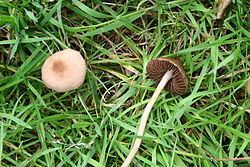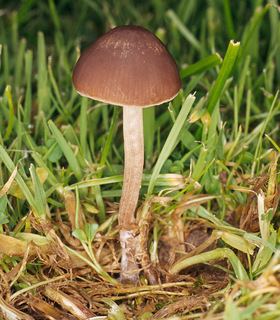Kingdom Fungi Scientific name Panaeolina foenisecii Rank Species | Division Basidiomycota Genus Panaeolina Higher classification Panaeolina Order Agaricales | |
 | ||
Similar Panaeolina, Panaeolus, Panaeolus cinctulus, Panaeolus papilionaceus, Panaeolus fimicola | ||
Panaeolina foenisecii, commonly called the mower's mushroom, haymaker or brown hay mushroom, is a very common and widely distributed little brown mushroom often found on lawns. In 1963 Tyler and Smith found that this mushroom contains serotonin, 5-HTP and 5-hydroxyindoleacetic acid. In many field guides it is listed as psychoactive due to psilocybin content, however the mushroom does not produce any psychoactive alkaloids.
Contents

It is sometimes mistaken for the psychedelic Panaeolus cinctulus or Panaeolus olivaceus both of which share the same habitat and can be differentiated by their jet black spores. This is probably why Panaeolina foenisecii is often listed as a psychoactive species.
Panaeolina foenisecii mushrooms
Description

Gallery
The following two images are of Panaeolina foenisecii in the wild with two magnifications of the spore print.


